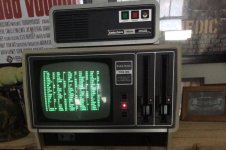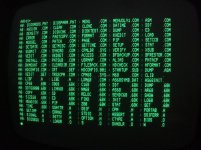rambunxious
Member
Recently acquired a large collection of old computers. Had a chance today to fire up a TRS-80 Model 16. Quick boot up. No issues. Also has the extra 12 Meg Disk System that seems to work.
Has a Pickles & Trout CP/M operating system, that I'm not familiar with. But it was fun learning some of the ins and outs as I tried not to wreck anything. Opening .txt files with the VEDIT software was about as advanced as I could get today.
Here are a couple pictures:


Any advice on where I could start if I wanted to write some simple input/output programs? Simple math, stuff like that.
Has a Pickles & Trout CP/M operating system, that I'm not familiar with. But it was fun learning some of the ins and outs as I tried not to wreck anything. Opening .txt files with the VEDIT software was about as advanced as I could get today.
Here are a couple pictures:


Any advice on where I could start if I wanted to write some simple input/output programs? Simple math, stuff like that.
